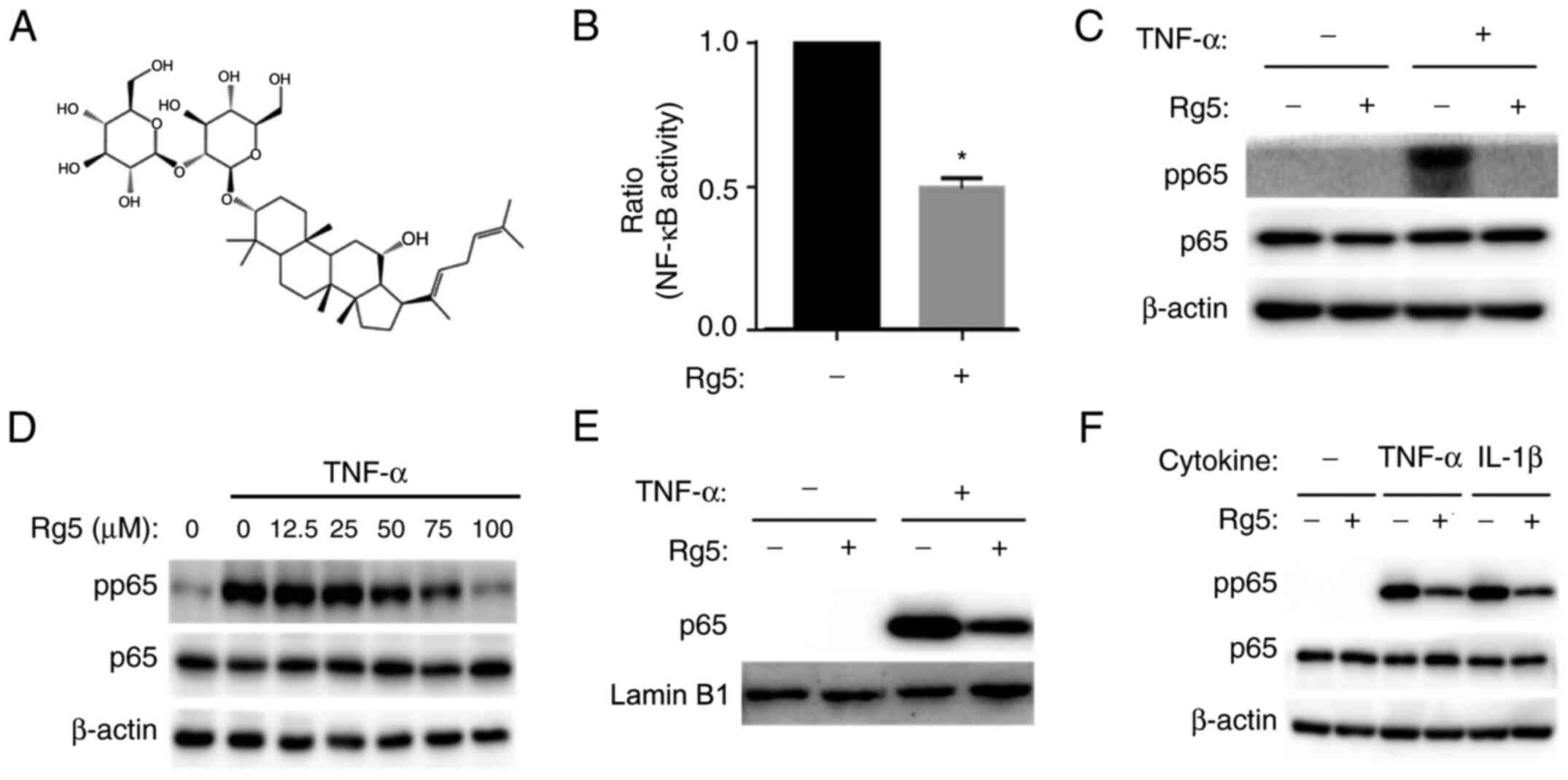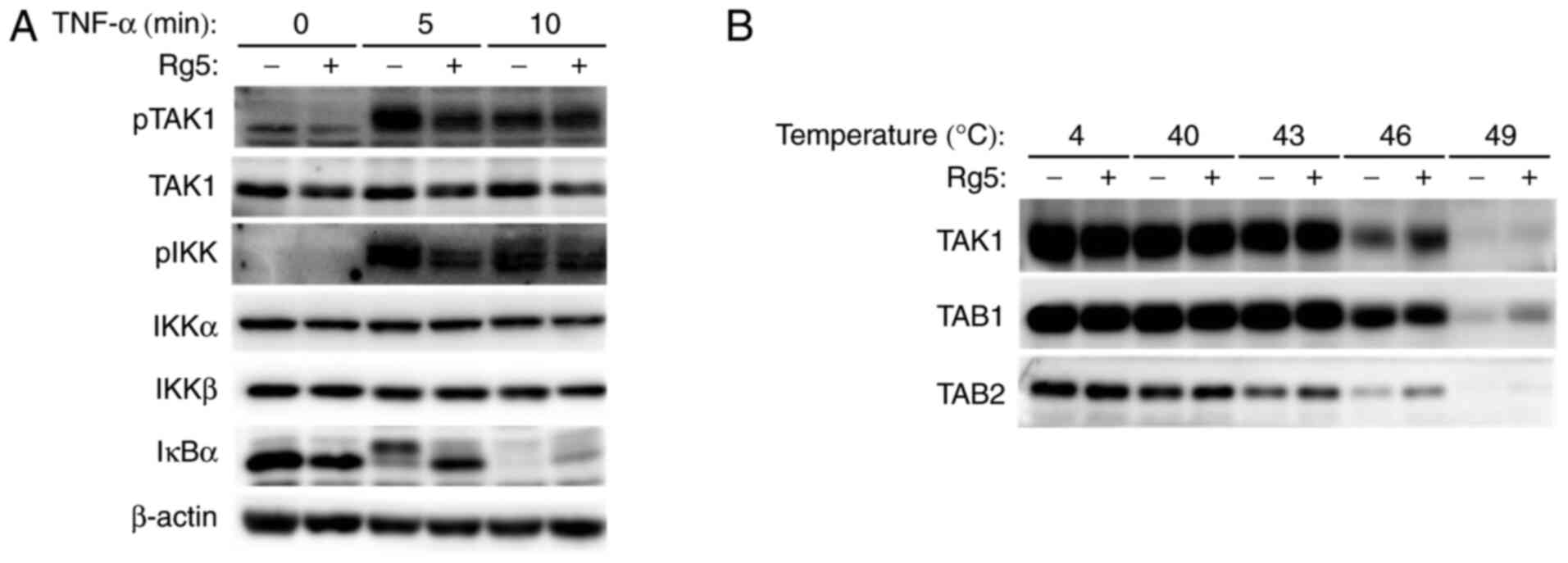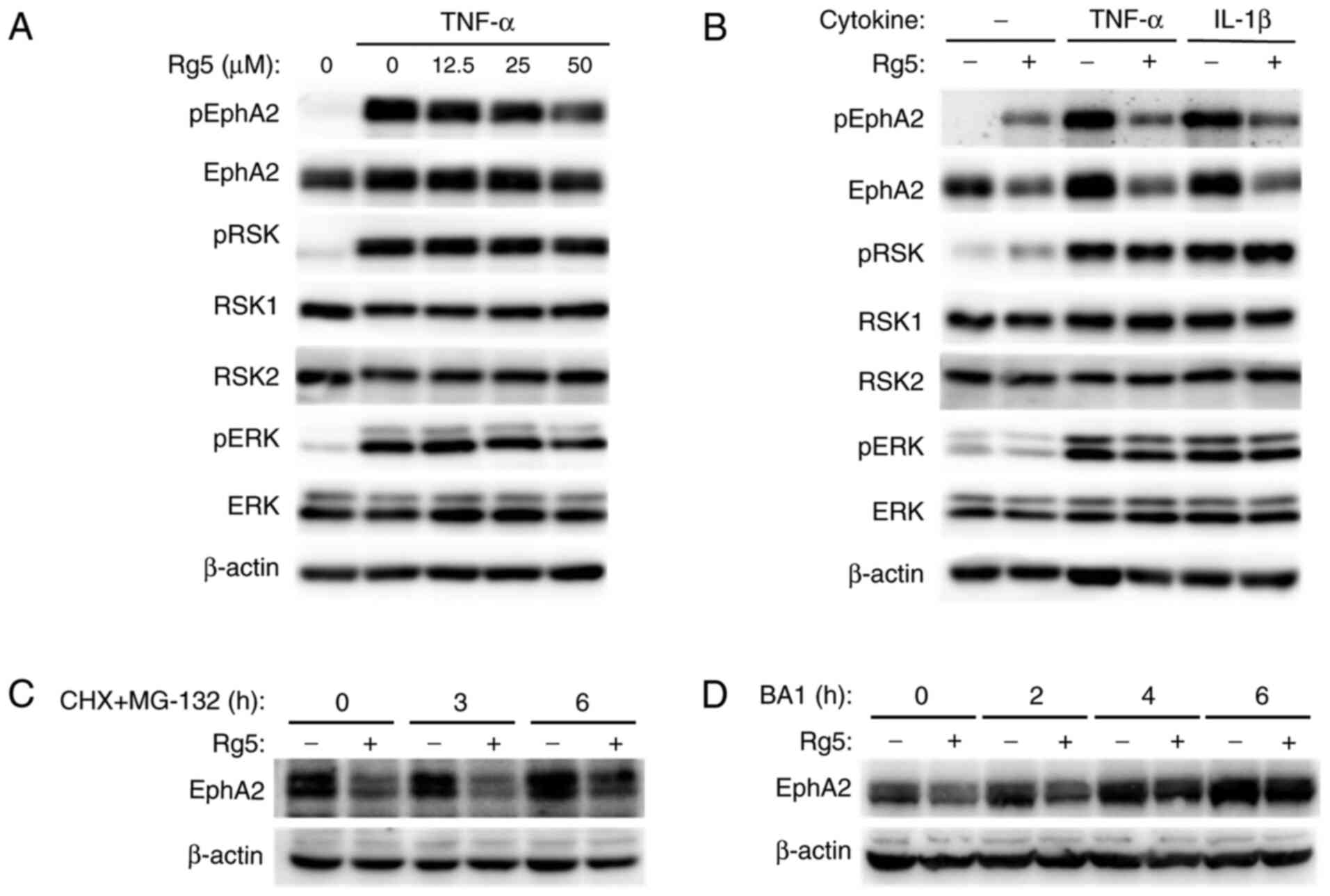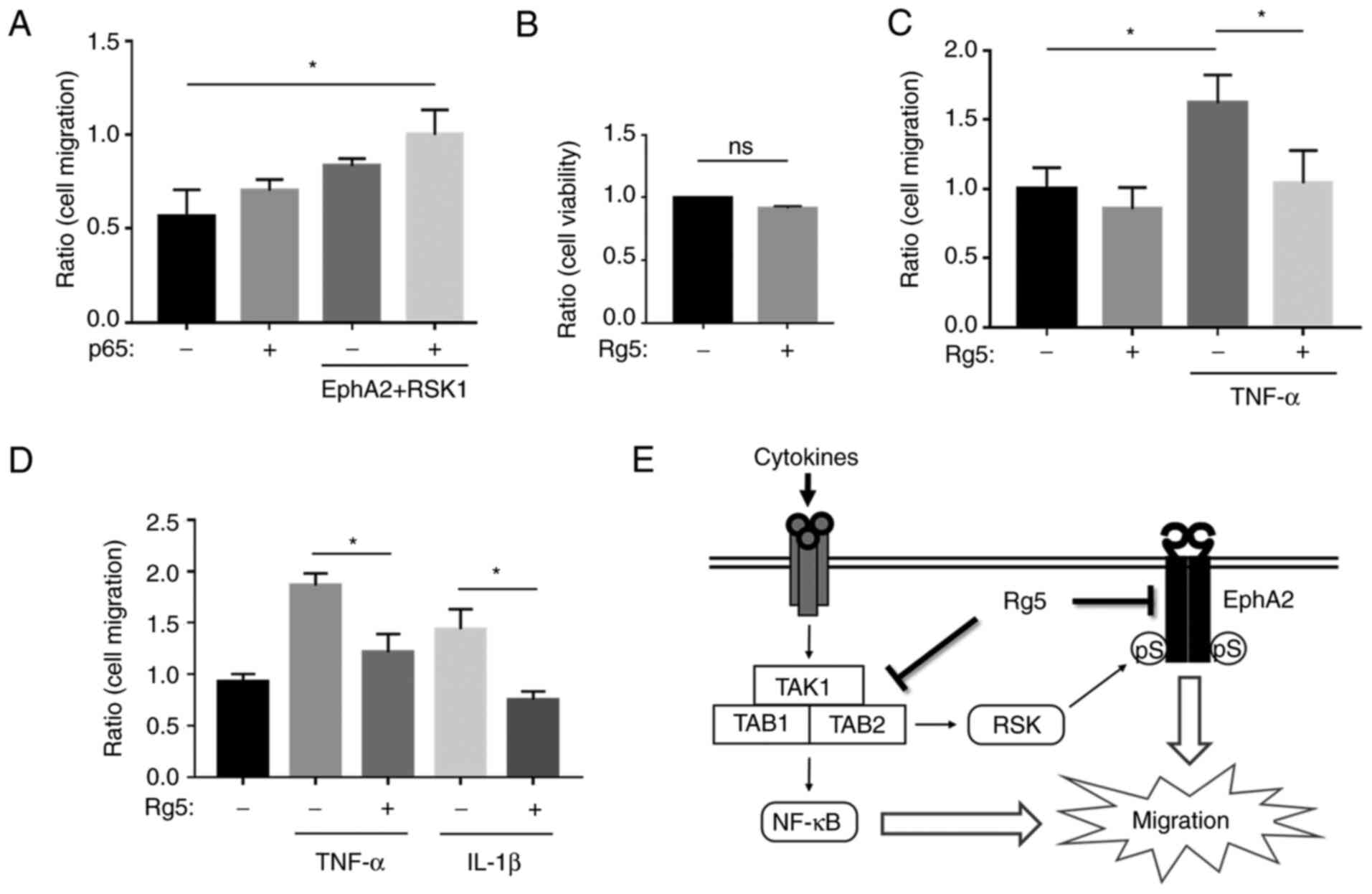|
1
|
Mehlen P and Puisieux A: Metastasis: A
question of life or death. Nat Rev Cancer. 6:449–458. 2006.
View Article : Google Scholar : PubMed/NCBI
|
|
2
|
Crusz SM and Balkwill FR: Inflammation and
cancer: Advances and new agents. Nat Rev Clin Oncol. 12:584–596.
2015. View Article : Google Scholar : PubMed/NCBI
|
|
3
|
Karin M: Nuclear factor-kappaB in cancer
development and progression. Nature. 441:431–436. 2006. View Article : Google Scholar : PubMed/NCBI
|
|
4
|
Sakurai H: Targeting of TAK1 in
inflammatory disorders and cancer. Trends Pharmacol Sci.
33:522–530. 2012. View Article : Google Scholar : PubMed/NCBI
|
|
5
|
Bharti AC and Aggarwal BB: Nuclear
factor-kappa B and cancer: Its role in prevention and therapy.
Biochem Pharmacol. 64:883–888. 2002. View Article : Google Scholar : PubMed/NCBI
|
|
6
|
Zhou Y and Sakurai H: Emerging and diverse
functions of the EphA2 noncanonical pathway in cancer progression.
Biol Pharm Bull. 40:1616–1624. 2017. View Article : Google Scholar : PubMed/NCBI
|
|
7
|
Wykosky J and Debinski W: The EphA2
receptor and ephrinA1 ligand in solid tumors: Function and
therapeutic targeting. Mol Cancer Res. 6:1795–1806. 2008.
View Article : Google Scholar : PubMed/NCBI
|
|
8
|
Zhou Y, Yamada N, Tanaka T, Hori T,
Yokoyama S, Hayakawa Y, Yano S, Fukuoka J, Koizumi K and Sakurai H:
Crucial roles of RSK in cell motility by catalyzing serine
phosphorylation of EphA2. Nat Commun. 6:76792015. View Article : Google Scholar : PubMed/NCBI
|
|
9
|
Song H and Lee YJ: Inhibition of
hypoxia-induced cyclooxygenase-2 by Korean Red Ginseng is dependent
on peroxisome proliferator-activated receptor gamma. J Ginseng Res.
41:240–246. 2017. View Article : Google Scholar : PubMed/NCBI
|
|
10
|
Kee JY, Han YH, Mun JG, Park SH, Jeon HD
and Hong SH: Effect of Korean Red Ginseng extract on colorectal
lung metastasis through inhibiting the epithelial-mesenchymal
transition via transforming growth
factor-β1/Smad-signaling-mediated Snail/E-cadherin expression. J
Ginseng Res. 43:68–76. 2019. View Article : Google Scholar : PubMed/NCBI
|
|
11
|
Poudyal D, Cui X, Le PM, Hofseth AB,
Windust A, Nagarkatti M, Nagarkatti PS, Schetter AJ, Harris CC and
Hofseth LJ: A key role of microRNA-29b for the suppression of colon
cancer cell migration by American ginseng. PLoS One. 8:e750342013.
View Article : Google Scholar : PubMed/NCBI
|
|
12
|
Gao Q and Zheng J: Ginsenoside Rh2
inhibits prostate cancer cell growth through suppression of
microRNA-4295 that activates CDKN1A. Cell Prolif. 51:e124382018.
View Article : Google Scholar : PubMed/NCBI
|
|
13
|
Jang KJ, Choi SH, Yu GJ, Hong SH, Chung
YH, Kim CH, Yoon HM, Kim GY, Kim BW and Choi YH: Anti-inflammatory
potential of total saponins derived from the roots of Panax
ginseng in lipopolysaccharide-activated RAW 264.7 macrophages.
Exp Ther Med. 11:1109–1115. 2016. View Article : Google Scholar : PubMed/NCBI
|
|
14
|
Mao H, Jiang C, Xu L, Chen D, Liu H, Xu Y,
Ma K and Wang M: Ginsenoside protects against AKI via activation of
HIF-1α and VEGF-A in the kidney-brain axis. Int J Mol Med.
45:939–946. 2020.PubMed/NCBI
|
|
15
|
Nguyen NH and Nguyen CT: Pharmacological
effects of ginseng on infectious diseases. Inflammopharmacology.
27:871–883. 2019. View Article : Google Scholar : PubMed/NCBI
|
|
16
|
Liang LD, He T, Du TW, Fan YG, Chen DS and
Wang Y: Ginsenoside-Rg5 induces apoptosis and DNA damage in human
cervical cancer cells. Mol Med Rep. 11:940–946. 2015. View Article : Google Scholar : PubMed/NCBI
|
|
17
|
Lee YY, Park JS, Jung JS, Kim DH and Kim
HS: Anti-inflammatory effect of ginsenoside Rg5 in
lipopolysaccharide-stimulated BV2 microglial cells. Int J Mol Sci.
14:9820–9833. 2013. View Article : Google Scholar : PubMed/NCBI
|
|
18
|
Kim SJ and Kim AK: Anti-breast cancer
activity of Fine Black ginseng (Panax ginseng Meyer) and
ginsenoside Rg5. J Ginseng Res. 39:125–134. 2015. View Article : Google Scholar : PubMed/NCBI
|
|
19
|
Waiwut P, Shin MS, Inujima A, Zhou Y,
Koizumi K, Saiki I and Sakurai H: Gomisin N enhances TNF-α-induced
apoptosis via inhibition of the NF-κB and EGFR survival pathways.
Mol Cell Biochem. 350:169–175. 2011. View Article : Google Scholar : PubMed/NCBI
|
|
20
|
Jafari R, Almqvist H, Axelsson H,
Ignatushchenko M, Lundbäck T, Nordlund P and Martinez Molina D: The
cellular thermal shift assay for evaluating drug target
interactions in cells. Nat Protoc. 9:2100–2122. 2014. View Article : Google Scholar : PubMed/NCBI
|
|
21
|
Livak KJ and Schmittgen TD: Analysis of
relative gene expression data using real-time quantitative PCR and
the 2(-Delta Delta C(T)) method. Methods. 25:402–408. 2001.
View Article : Google Scholar : PubMed/NCBI
|
|
22
|
Hong JY, Shin MH, Douglas IS, Chung KS,
Kim EY, Jung JY, Kang YA, Kim SK, Chang J, Kim YS and Park MS:
Inhibition of EphA2/EphrinA1 signal attenuates
lipopolysaccharide-induced lung injury. Clin Sci (Lond).
130:1993–2003. 2016. View Article : Google Scholar : PubMed/NCBI
|
|
23
|
Funk SD, Finney AC, Yurdagul A Jr,
Pattillo CB and Orr AW: EphA2 stimulates VCAM-1 expression through
calcium-dependent NFAT1 activity. Cell Signal. 49:30–38. 2018.
View Article : Google Scholar : PubMed/NCBI
|
|
24
|
Cho YL, Hur SM, Kim JY, Kim JH, Lee DK,
Choe J, Won MH, Ha KS, Jeoung D, Han S, et al: Specific activation
of insulin-like growth factor-1 receptor by ginsenoside Rg5
promotes angiogenesis and vasorelaxation. J Biol Chem. 290:467–477.
2015. View Article : Google Scholar : PubMed/NCBI
|
|
25
|
The Human Protein Atlas. Available from, .
https://www.proteinatlas.org/.
|
|
26
|
The Catalogue Of Somatic Mutations In
Cancer (COSMIC). COSMIC v92, released 27-AUG-20, . https://cancer.sanger.ac.uk/cosmic
|
|
27
|
Kwon YT and Ciechanover A: The ubiquitin
code in the ubiquitin-proteasome system and autophagy. Trends
Biochem Sci. 42:873–886. 2017. View Article : Google Scholar : PubMed/NCBI
|
|
28
|
Ganley IG: Autophagosome maturation and
lysosomal fusion. Essays Biochem. 55:65–78. 2013. View Article : Google Scholar : PubMed/NCBI
|


















